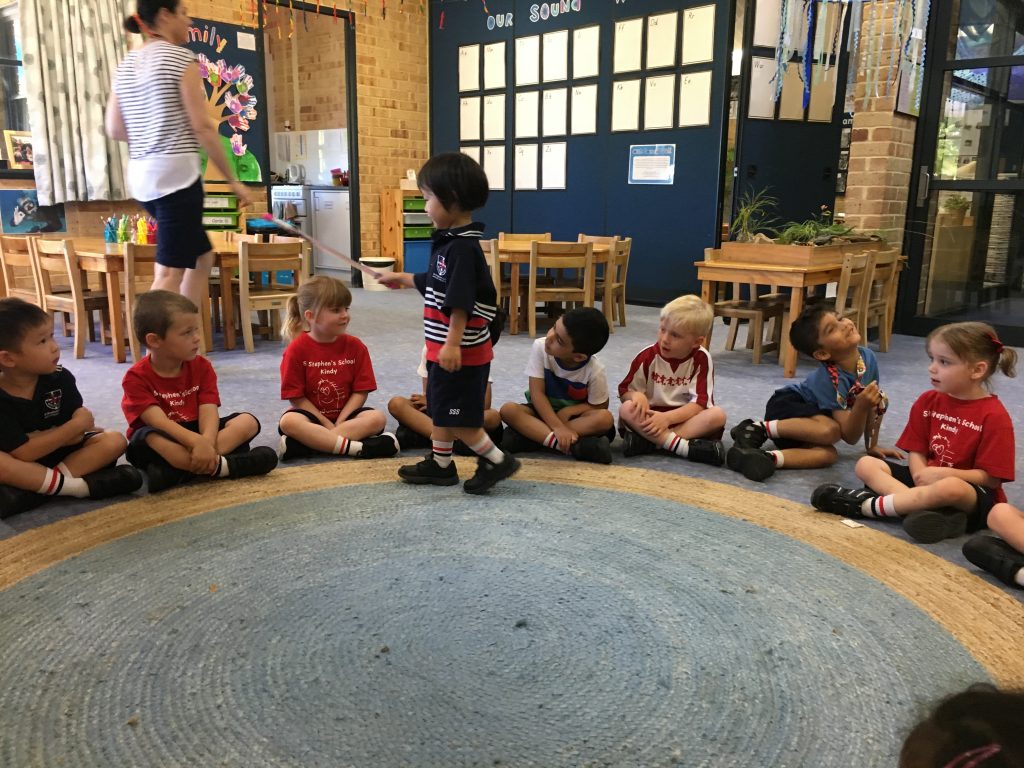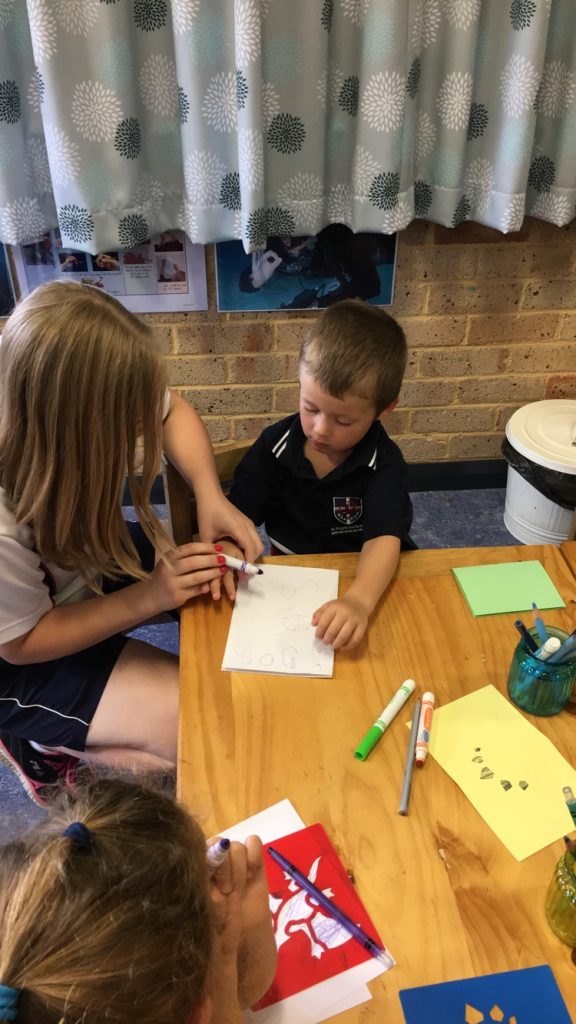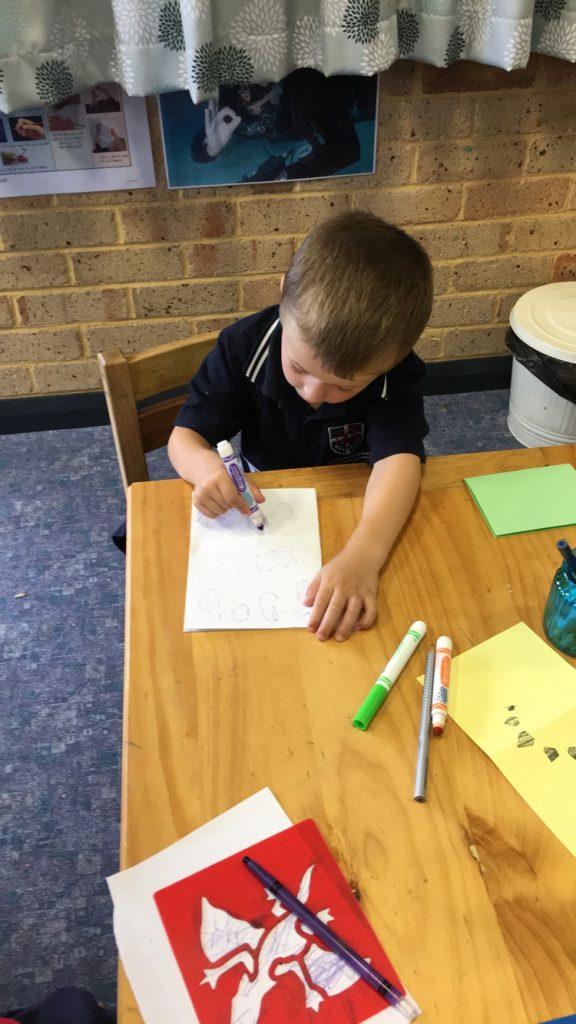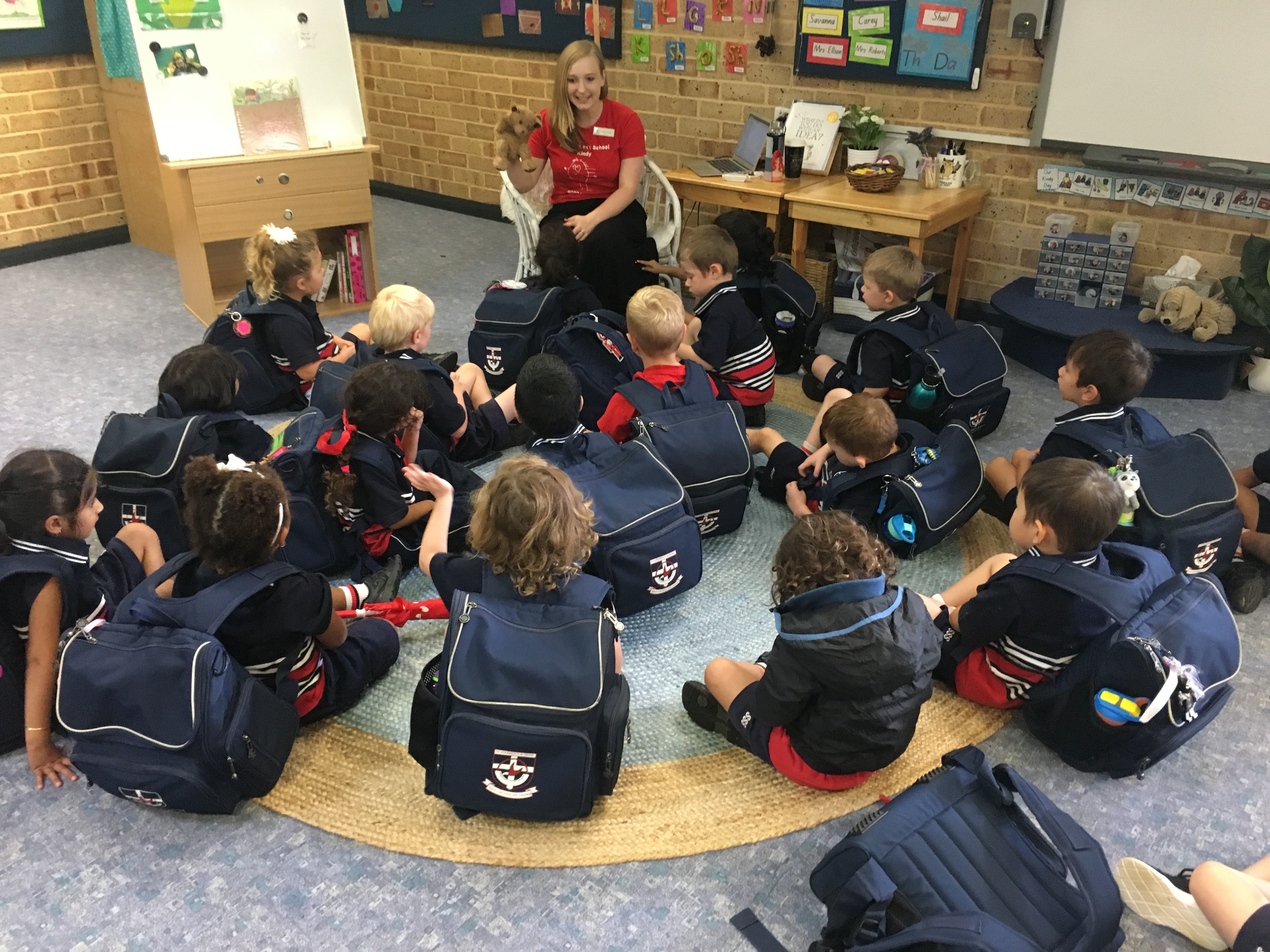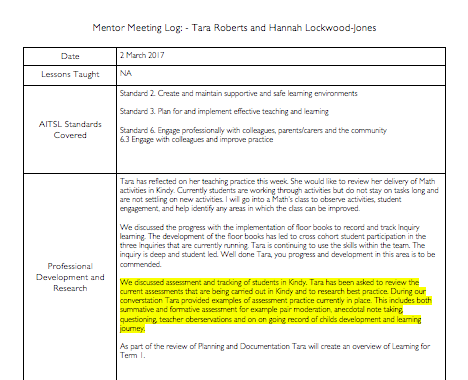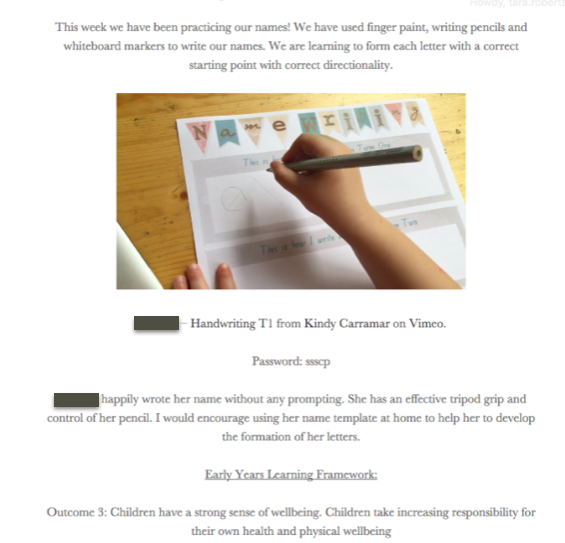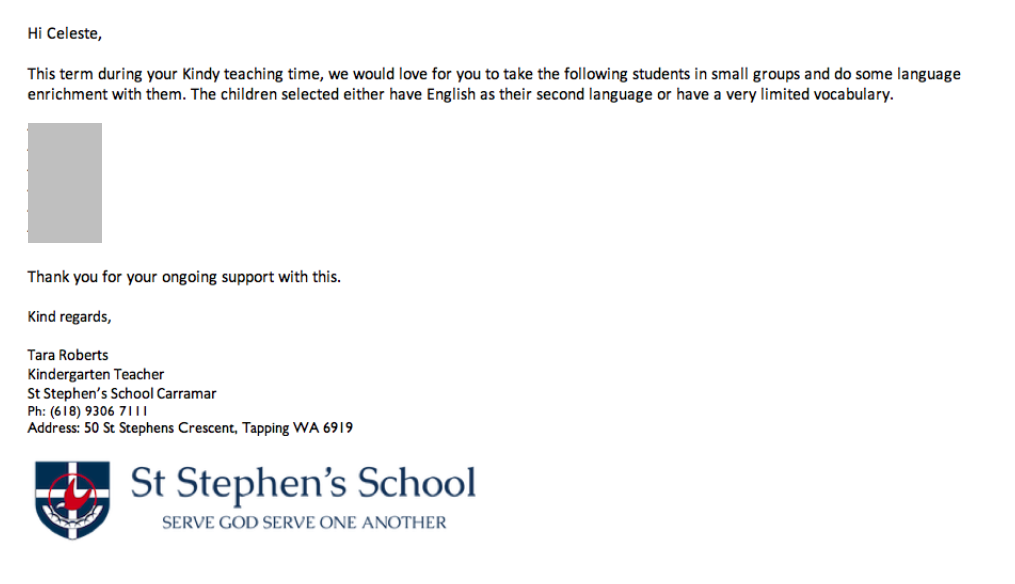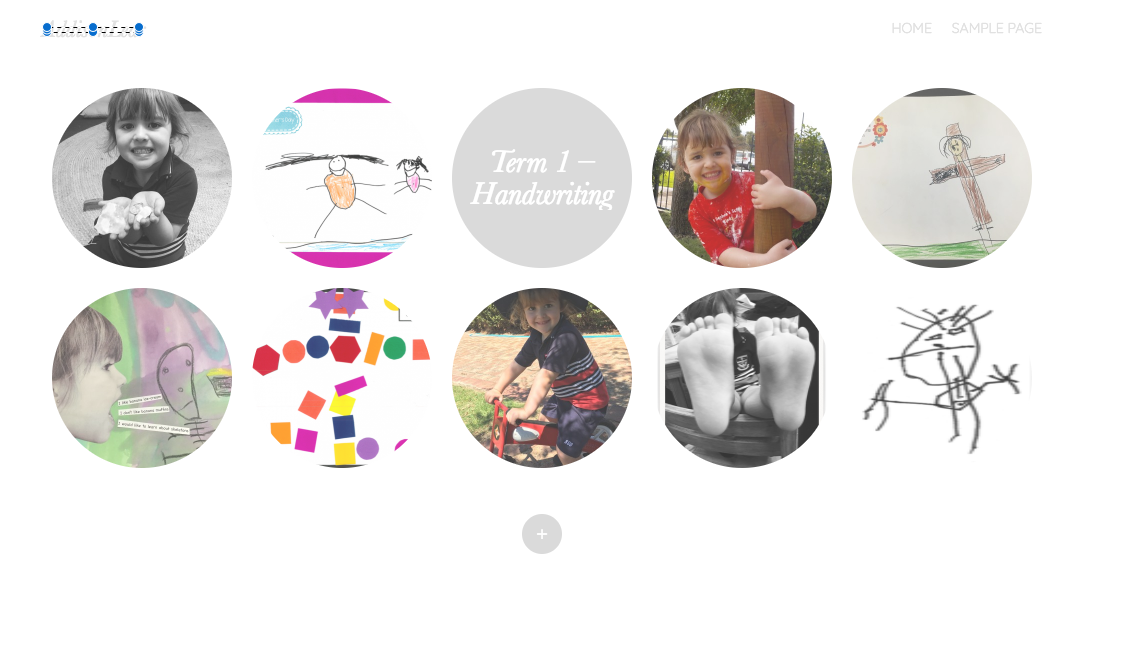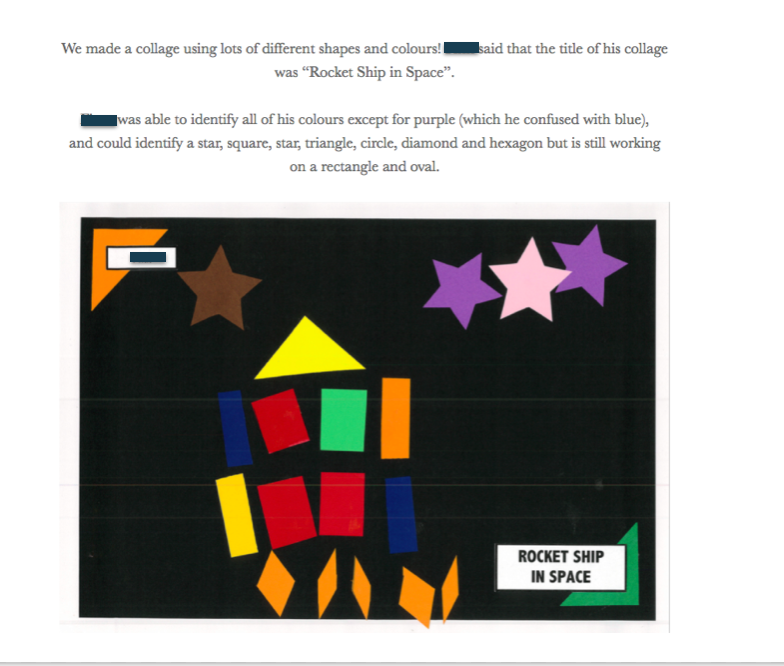Assess, provide feedback and report on student learning
______________________________________________________________________
5.1 Assess student learning
Develop, select and use informal and formal, diagnostic, formative and summative assessment strategies to assess student learning.
We use a range of different types of assessment in Kindergarten.
During mat sessions, I use informal assessment to see if the children are able to count up to 22 (the amount of members in our class). I ask one different child each day to have a go at counting how many children are at Kindy in the morning.
Throughout the year, I use formative (in terms 2 & 3) and formal summative (in term 4) assessments to see if the children know their colours, shapes, letter sounds and numbers by showing them flash cards and ticking it off the assessment rubric.
__________________________________________________________________________
5.2 Provide feedback to students on their learning
Provide timely, effective and appropriate feedback to students about their achievement relative to their learning goals.
In Kindergarten, we provide students with oral feedback to support their learning. The following photos demonstrate providing feedback to a student who had poor pencil grip and the child modifying his pencil grip following my feedback.
Each afternoon, the children greet ‘Bertie the bear’. ‘Bertie the bear’ provides feedback to the students on their ability to listen to instructions, sit nicely on the mat, look out for their friends and look after their environment.
______________________________________________________________________________
5.3 Make consistent and comparable judgements
Understand and participate in assessment moderation activities to support consistent and comparable judgements of student learning.
The attached document is meeting minutes from a moderation meeting that we had with the Pre-Primary and Kindy Teachers to ensure we have consistent expectation of students exiting Kindy, and Entering Pre-Primary.
The attached document is a screen shot of notes from a coaching session with mentor, Hannah Lockwood-Jones. She notes our conversations around assessment and moderation and how we have further developed these in Kindy.
______________________________________________________________________________
5.4 Interpret student data
Use student assessment data to analyse and evaluate student understanding of subject/content, identifying interventions and modifying teaching practice.
In Kindy, we report to families on a weekly basis. Each child has their own blog which includes work samples of their learning. The picture shows a Term one writing assessment that I conducted. I decided to film the students writing their name to ensure a thorough assessment of their pencil grip, letter formations and directionality. I attached each child’s video to their blog to allow the parents to see their child’s independent writing in action. In the picture, it is evident that I analysed the assessment and identified some goals to support the child’s writing development.
At the beginning of Term 1, I met with the Pre-Kindy teacher and learning assistant to obtain notes and information about children in my class. I used this data to help inform my teaching program by identifying a common need (Children who had english as a second language or limited vocabulary). I organising for the learning enrichment coordinator to take these children in small groups and run some sessions with them.
This demonstrates my ability to interpret student data and modify teaching practise.
______________________________________________________________________________
5.5 Report on student achievement
Report clearly, accurately and respectfully to students and parents/carers about student achievement, making use of accurate and reliable records.
Each week, we update the children’s families/carers on their child’s achievement for the week. Each chid has an individual e-portfolio which includes work samples of the child’s development, achievement and learning. Each post is individualised to the child and their ability.
Another way we report on children’s learning is through the end of year reports. The parents receive a report page at the end of the year, describing in detail their child’s achievements.
Click the link below for an example of a past report.
Child Report – Professional Portfolio -2aotbzl
__________________________________________________________________________________
